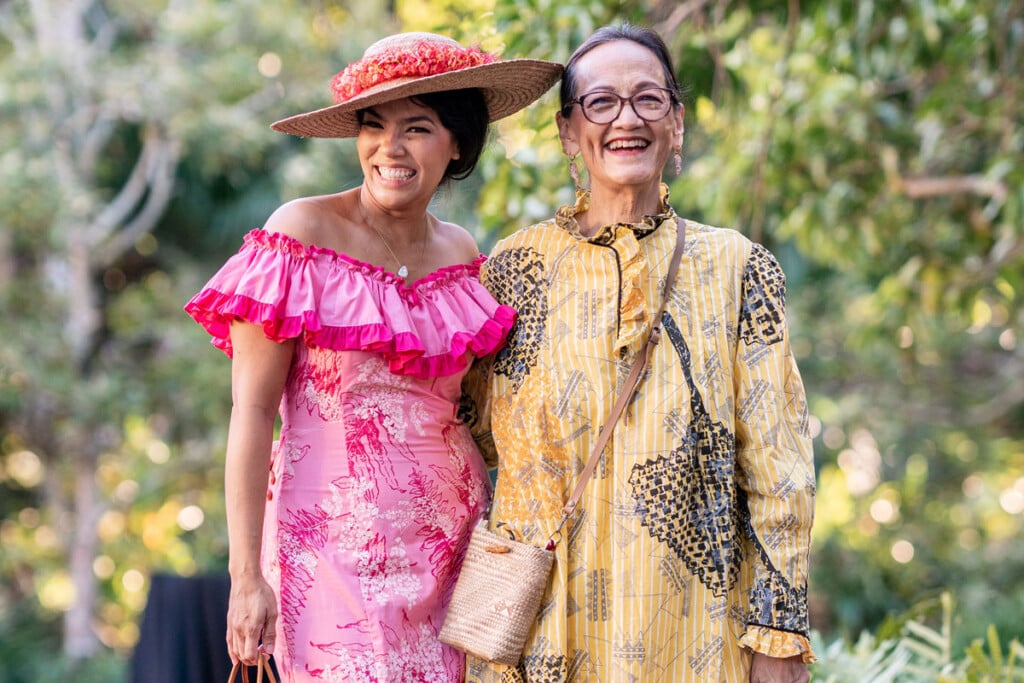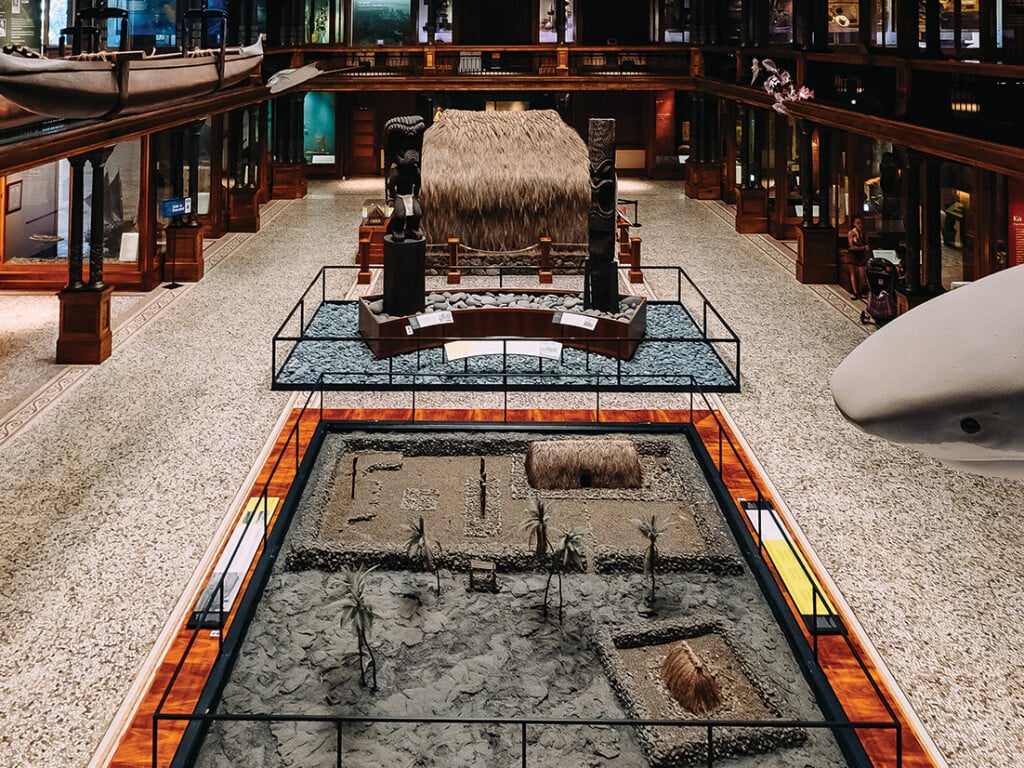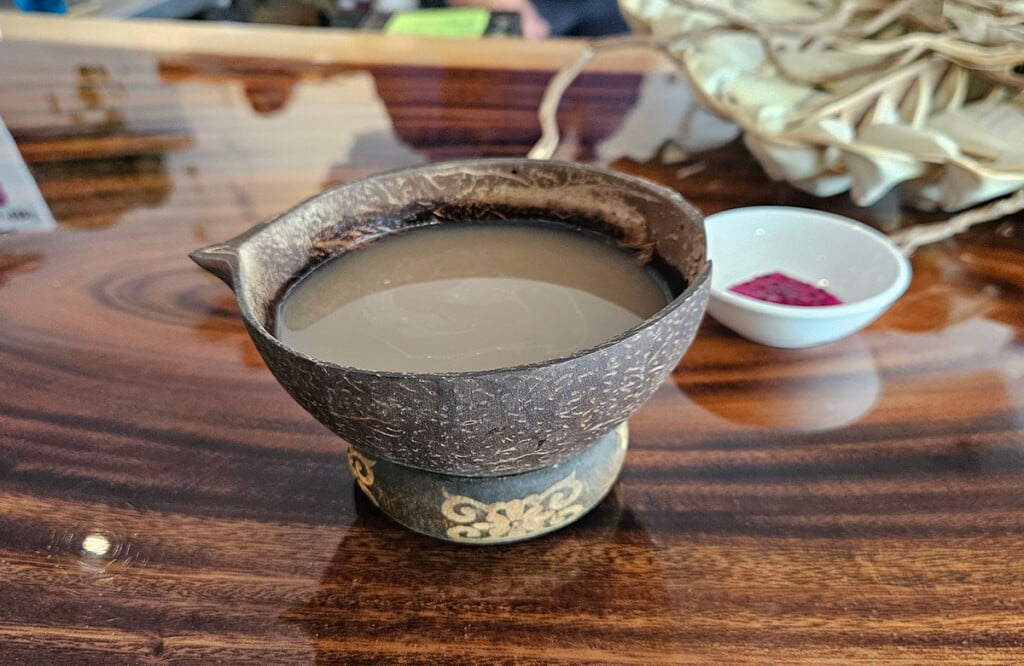Rediscovering Hawai‘i’s Soul: The Journey Begins
From Maunakea to Kapūkakī (Red Hill) to Lahaina, the movement has brought leaders together to find ways forward on our Islands’ most divisive issues.
When explaining the origins of Rediscovering Hawai‘i’s Soul, Duane Kurisu says he was troubled by the divisions over Maunakea and the overall erosion of our Hawai‘i ways. But as he continues, Kurisu, chairman of the Hawai‘i Executive Collaborative, offers a deeper motivation: “I love Hawai‘i. I would die for Hawai‘i,” he says quietly.

Photo: Anthony Consillio
His words linger, and it’s clear he has a calling. At the 2018 Hawai‘i Executive Conference, he urged the state’s top business and community leaders to join him in a fight for Hawai‘i’s soul. While his message clearly resonated as a conference topic, Kurisu didn’t want it to be just a feel-good passing sentiment. He wanted a movement.
Over time and many heated conversations, Rediscovering Hawai‘i’s Soul became a thing—and his call to action was answered. Efforts officially got underway in August and September 2022, when 43 Native Hawaiian activists, CEOs and community leaders converged behind closed doors at Turtle Bay Resort to discuss Hawai‘i’s most divisive issues. The unlikely talks among leaders, many of whom are on opposite ends of the spectrum on such fiery matters as Maunakea, Kapūkakī (Red Hill) and ceded lands, was expectedly contentious, yet productive. With the help of professional mediators, they crafted four possible future scenarios for Hawai‘i, which have become the framework for the Rediscovering Hawai‘i’s Soul movement.

“I look at the document as a miracle, because when we first stepped into the room, there were such diverse feelings. I thought, what’s going to happen? Is this thing going to blow up or what?” Kurisu recalls. “But when you talk in a trusted space, even though you might have different views, you can talk about difficult subjects with dignity. And while we could see temperatures rising, it was never a shouting thing. It was all about trust.”
SEE ALSO: Hawai‘i’s Soul Is at Risk
“Everyone who lives in Hawai‘i makes up its soul, and we all have a shared responsibility to create and to perpetuate and preserve what’s special about this place.”
— Lynelle Marble
What Is Hawai‘i’s Soul?
What unified the leaders was a realization that they all deeply care about our home and want to keep Hawai‘i Hawai‘i. Our soul is rooted in Island consciousness, a love for Hawai‘i and all its cultures, says Lynelle Marble, executive director of the Hawai‘i Executive Collaborative, which organized the efforts. For her, it’s not about race, religion, backgrounds, how long you’ve lived here or where your ancestors originated from. “Everyone who lives in Hawai‘i makes up its soul, and we all have a shared responsibility to create and to perpetuate and preserve what’s special about this place,” she says.
This is captured in the concept of “kō Hawai‘i,” which is our Hawai‘i, Marble says. “It’s saying I’m kanaka kō Hawai‘i, Japanese kō Hawai‘i, white and just moved here kō Hawai‘i. It brings us together.”
The Rediscovering Hawai‘i’s Soul model, she says, creates structure, with collaboration as the backbone. It’s an example of what can be done statewide to bring positive change.
The Who’s Who
More than 150 businesses and organizations are now involved, and the roster of the 43 people who hashed out their differing perspectives at Turtle Bay represents a who’s who of leadership in the Islands: Kūhiō Lewis of the Council for Native Hawaiian Advancement; Micah Kāne of the Hawai‘i Community Foundation; the Polynesian Voyaging Society’s Nainoa Thompson; Army Maj. Gen. Kenneth Hara of the state Department of Defense; Kamana‘opono Crabbe, formerly of the Office of Hawaiian Affairs; former Hawai‘i Gov. John Waihe‘e III; Kamehameha Schools’ Jack Wong; Hawaiian Electric’s Shelee Kimura; American Savings Bank’s Ann Teranishi; and Peter Ho of Bank of Hawai‘i, to name a few.
“I’m hopeful about what this means for our people, and how we can move forward together and make a difference. It inspires me. It’s meaningful. It’s a movement.”
— Michelle Ka‘uhane
“There are deep historical traumas that Native Hawaiian communities face, but I’ve worked a long time in the Hawaiian community, and I know we were only talking to Native Hawaiians. This opened my eyes to understand there are allies and business leaders who want to help,” says Michelle Ka‘uhane, senior vice president and chief impact officer of the Hawai‘i Community Foundation. Ka‘uhane is part of the core team driving overall efforts to rediscover Hawai‘i’s soul. “I’m really humbled by the honesty and level of conversations. To put some of our front-line Native Hawaiian activists with the Peter Hos of the world—when would that have ever happened before? I’m hopeful about what this means for our people, and how we can move forward together and make a difference. It inspires me. It’s meaningful. It’s a movement.”
This past June, some 300 invitees attended the first Rediscovering Hawai‘i’s Soul network gathering to discuss Hawai‘i’s most urgent issues. Some 13 “choice points” or topics—addressing such things as tourism, the military’s role in Hawai‘i, ceded lands, the ‘āina, climate and education—came out of those sessions. Now hui, or smaller groups, are convening separately on these issues, and in January 2024, the groups will converge to spell out the actions they’re taking.
The goal of the gatherings has never been just to talk, but to act. But to act, difficult conversations must happen. “When I came home from the workshops, I was exhausted,” says Ka‘uhane, a Kamehameha Schools trustee. “There was a lot of tension and a lot of deep reflection and not agreeing. But we were committed to stay at the table, and after tears and laughter, there was trust. Regardless of ethnicity or race, whether you’re Hawaiian, Japanese, Chinese, whatever, we have to have healthy conversations about what we have in common—Hawai‘i—and recognize we are all of this place and love this place.”
Alliances have already formed, leading to new initiatives. The County of Hawai‘i used tools and practices from Rediscovering Hawai‘i’s Soul sessions to embed Hawaiian language and ‘āina-based thinking in its government culture and processes. Kurisu and Native Hawaiian activist Walter Ritte of Moloka‘i took a walk during one of the sessions, and their talks led to a partnership between business leaders and activists, who plan to meet with Moloka‘i Ranch landowners to help preserve the island’s natural resources. American Savings Bank, meanwhile, partnered with Hawaiian Community Assets on a Hawaiian Home Lands construction lending program. Then, after the August Maui wildfires, in a show of unity coordinated by the Hawai‘i Executive Collaborative, Native Hawaiians and other spiritual leaders held a one-day statewide vigil to grieve for Lahaina.
Lahaina at the Forefront
The way forward from Lahaina was the main topic at this past September’s Hawai‘i Executive Conference, now tied to the mission of Rediscovering Hawai‘i’s Soul. Along with CEOs and community leaders, Gov. Josh Green and the Islands’ mayors took part in one of the most charged panels, which addressed what happened on Maui, and what’s at stake.
“We all have a responsibility to leave something better for our children and our grandchildren, and it’s not a physical thing—it’s our soul.”
— Duane Kurisu
“There’s so much divide right now, and the tragedy on Maui has caused even further rifts, with lawsuits and pointing fingers,” Marble says. “On Maui, firefighters who were trying to save other people’s homes and letting their own homes burn are now getting death threats. There’s a lot of hate and hurt, but we live on an island, and we’ve got to stick together.”
The consensus among leaders was that Lahaina, the capital of the Kingdom of Hawai‘i with deep historical and cultural significance, should be rebuilt as a model of the positive change that could be created across Hawai‘i. “There’s an opportunity to build it up in a way where it is still rooted in our Native Hawaiian culture, our very diverse history, while understanding that it’s an economic driver for Maui too,” Marble says.
When asked why he and other leaders are committing themselves to the big and messy work of helping Hawai‘i find solutions for its myriad problems, Kurisu says there’s no choice. “We’re doing this because our children, grandchildren and great-grandchildren are going to get more than we got. If you don’t believe that, you might as well give up,” he says. “We all have a responsibility to leave something better for our children and our grandchildren, and it’s not a physical thing—it’s our soul.”
“Choice” Points
A set of critical choices confronting Hawai‘i emerged from deep conversations that have taken place as part of Rediscovering Hawai‘i’s Soul. Those taking part came up with the following questions, which they will be addressing.
- How do we integrate the teachings of Hawai‘i’s Soul into our actions?
- How do climate and energy intersect with other critical issues?
- How do we promote equity?
- How does Hawai‘i’s Soul influence our education system?
- How do we shape the future of tourism in Hawai‘i?
- What sacrifices and trade-offs are necessary for our state to embrace Hawai‘i’s Soul?
- What do we do to keep Hawaiians in Hawai‘i?
- What does the military’s presence in Hawai‘i look like?
- What happens to ceded lands?
- What is our relationship to ‘āina?
- How is power exercised?
- What do we do to promote economic well-being?
- What does success look like and how do we measure it?
Duane Kurisu is the chairman of aio, the parent company of HONOLULU Magazine. This story, like all of the stories in this issue, was conceptualized and produced independently by our editorial team.











